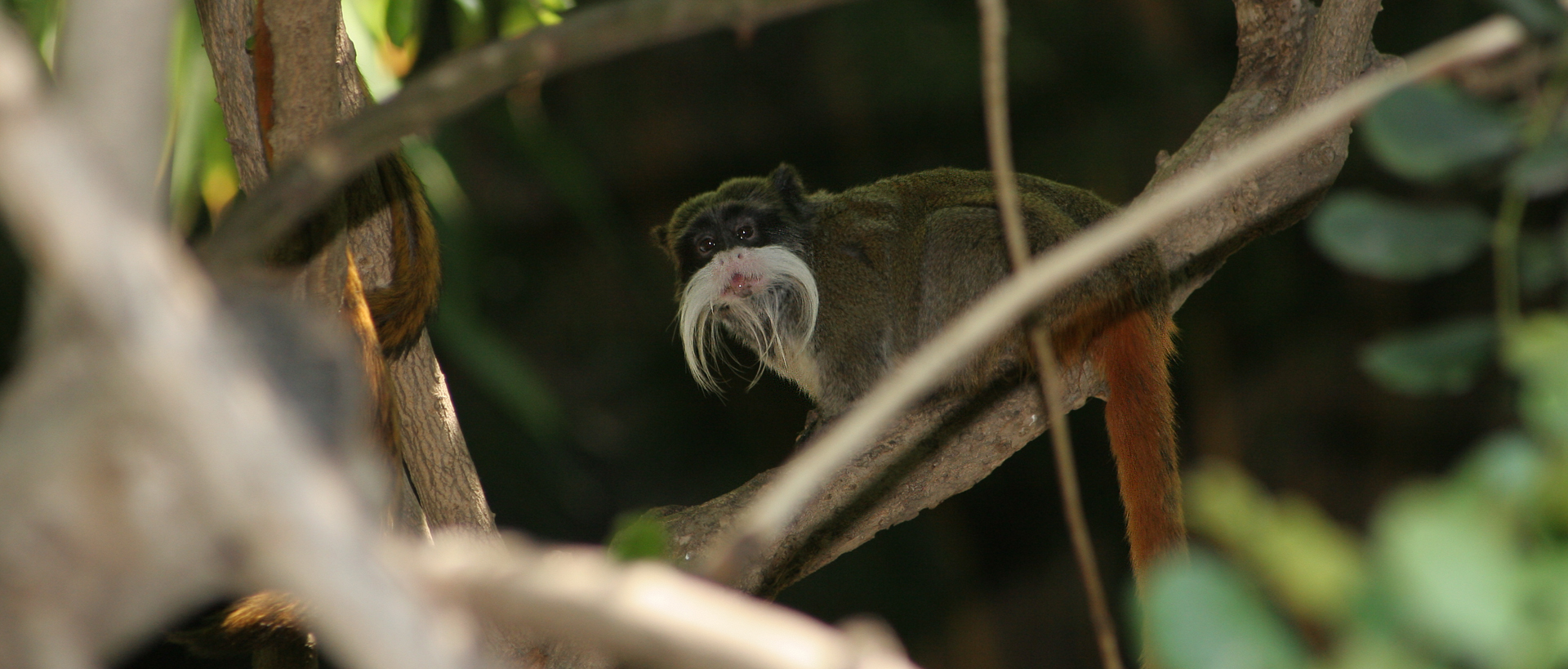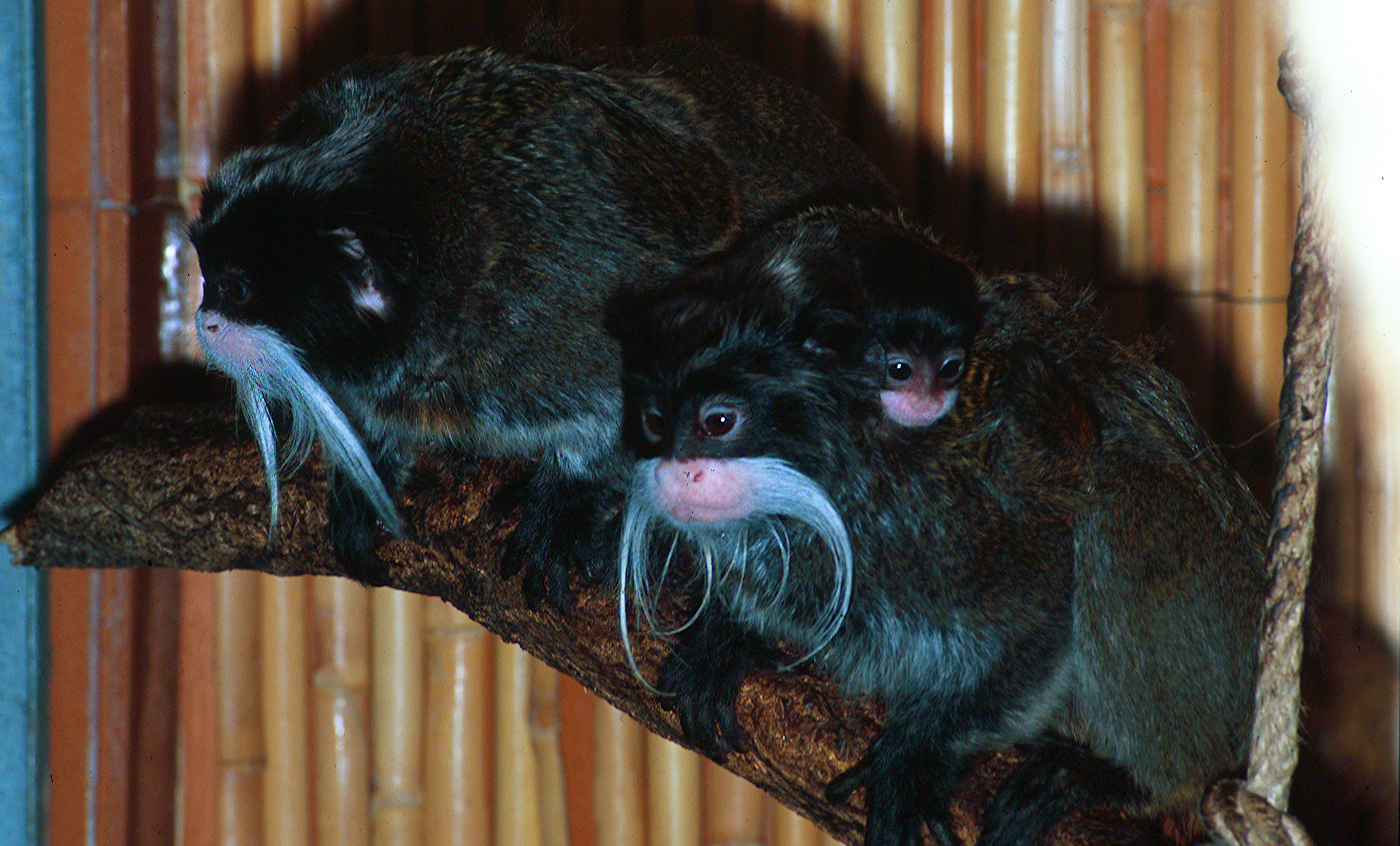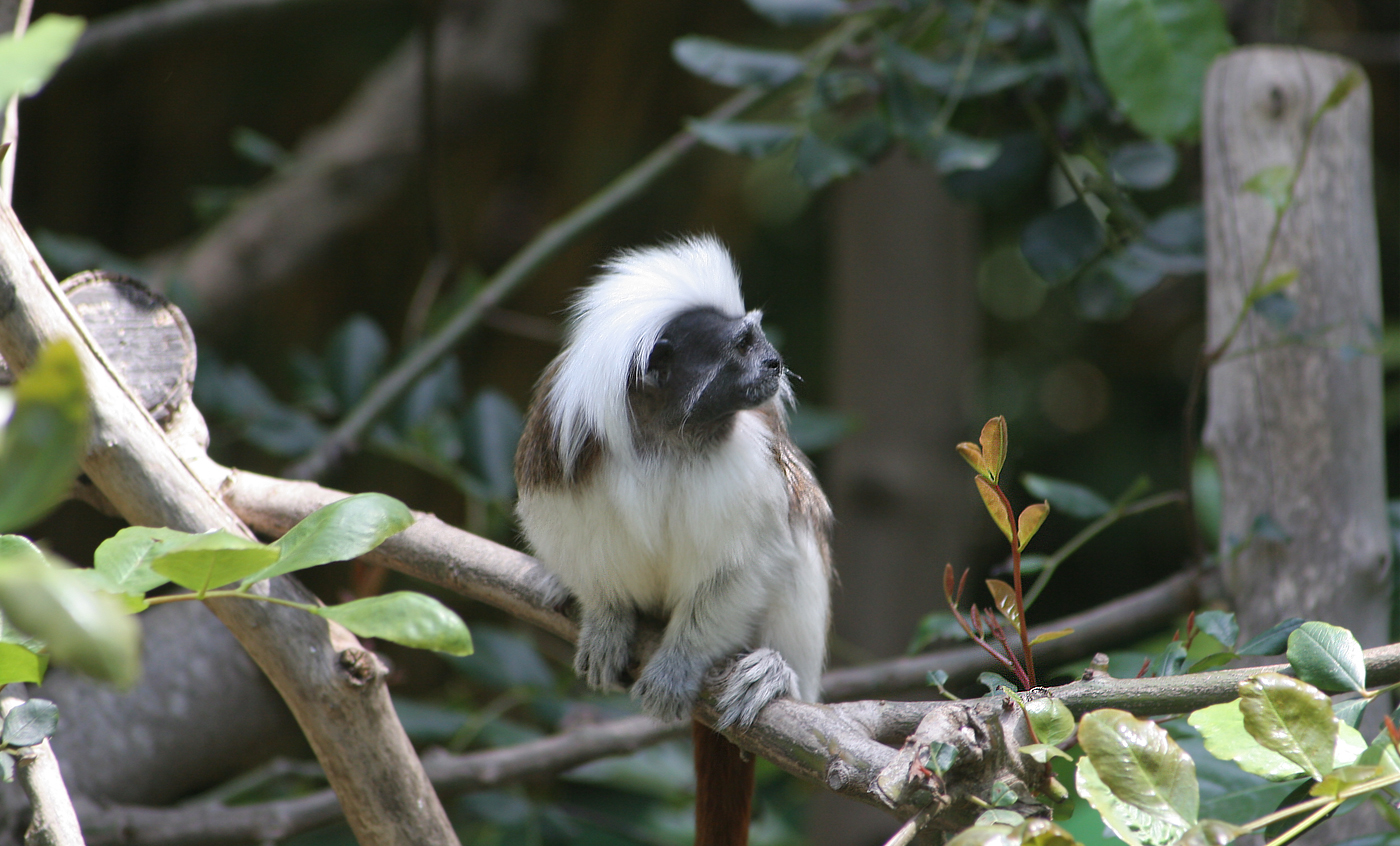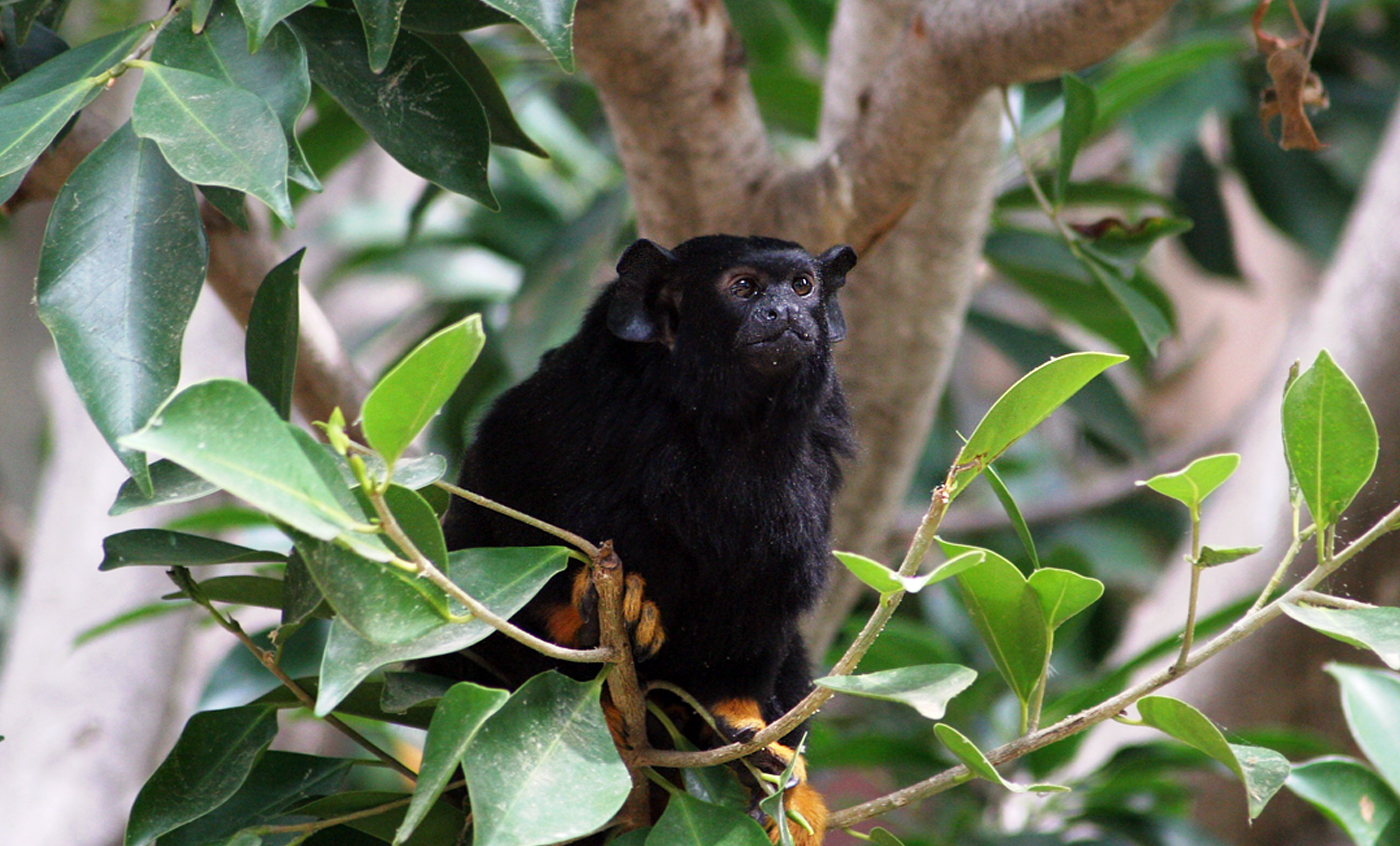Emperor tamarin
The emperor tamarin, easily distinguishable for its long white moustache, can be found in the rainforests of south-eastern Peru, north-western Bolivia and north-western Brazil.
It has exclusively arboreal habits and eats all kinds of fruits, leaves and tender sprouts, although it also captures insects and small vertebrates.
Its populations are currently in regression due to the destruction of its habitat.
Breeding program
Natural habit
South-eastern Peru, north-western Bolivia and north-western Brazil.
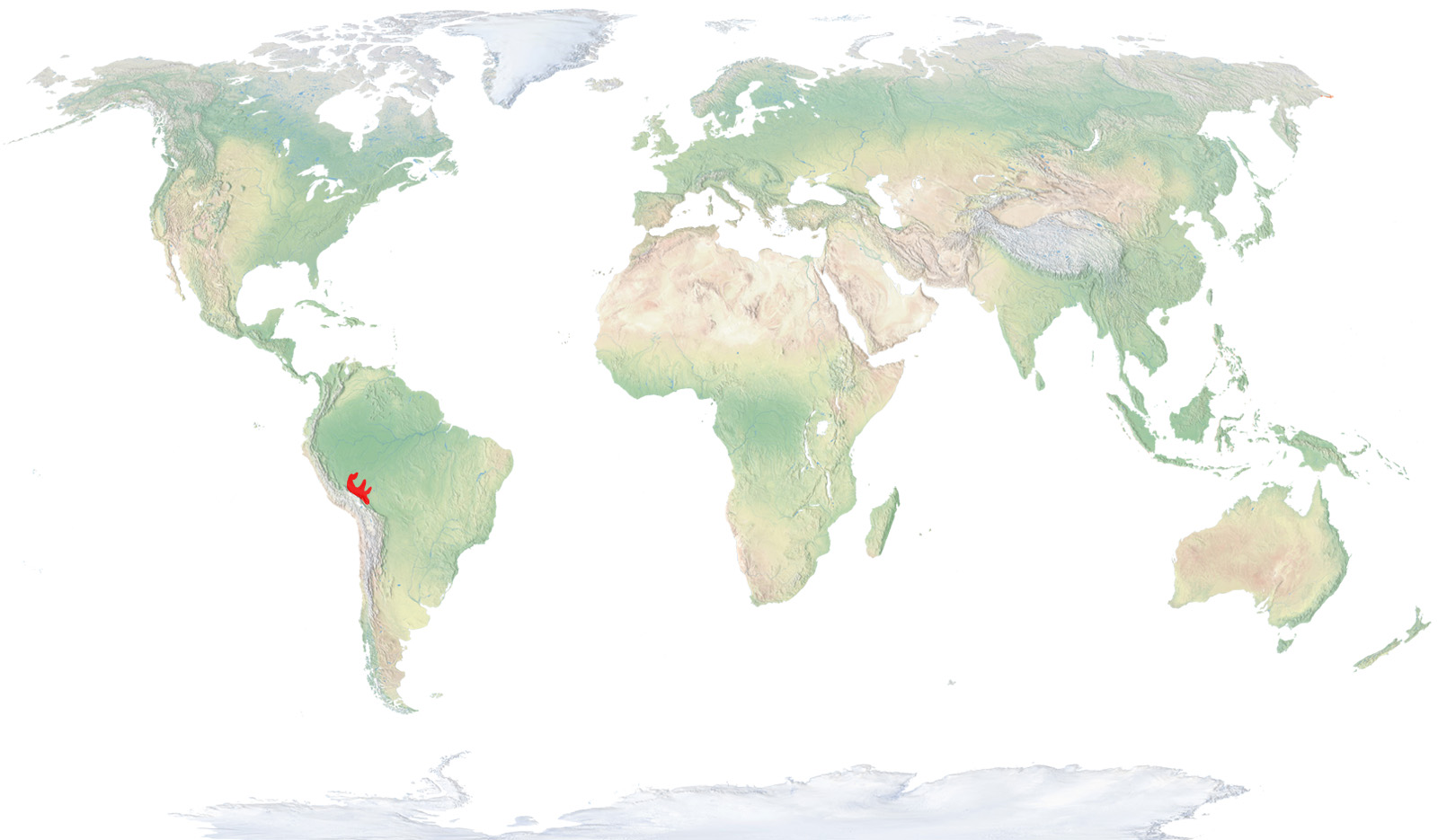
- Distribution / Resident
- Breeding
- Wintering
- Subspecies
Risk level
- Extint
- Extint in the wild
- Critically endangered
- In Danger
- Vulnerable
- Near threatened
- Minor concern
- Insufficient data
- Not evaluated
Taxonomy
Physical characteristics
Biology
Reproduction
Biology
This tamarin, with greyish to brownish fur and orange tail, is easily distinguishable for its long white moustache, present in both sexes.
Primary and secondary lowland and lower montane rainforests, occurring seasonally in flooding forests.
It is omnivore and eats all kinds of fruits, leaves flowers, nectar, sap and tender sprouts, although it also captures insects and small vertebrates.
Gestation lasts for 145 days and one or two infants are born each time, exceptionally three, which are carried on the back by the father after breastfeeding, every two or three hours.
Diurnal and exclusively arboreal, it lives in family groups of three to fifteen individuals, generally with more than one adult male and with a single reproductive female. Often, mixed groups are formed with other tamarin species, in order to help each other spot predators. While the emperor tamarin seems to be more skilled at spotting air predators, other tamarins appear more suited to detect earthbound predators. It is a territorial animal that defends territories of 30 to 40 hectares, against other groups.
Its populations are currently in regression due to the accelerated destruction of its rainforests.
The Zoo of Barcelona takes part in the EEP of this species.



